Transport Layer Security (TLS) stands as a cornerstone of modern internet security, a protocol meticulously designed to ensure privacy and data integrity across digital communications. Evolving from its predecessor, Secure Sockets Layer (SSL), TLS version 1.0 initially developed as SSL version 3.1, with the nomenclature change signifying its independence from Netscape and its establishment as a standardized protocol by the Internet Engineering Task Force (IETF). This progression from a proprietary solution to a universally accepted standard underscores a continuous drive towards robust, interoperable security protocols that can adapt to the global scale of the internet. The ongoing updates, such as the publication of TLS 1.3 in 2018, further exemplify a commitment to evolving security mechanisms to counter emerging threats and enhance performance.
While TLS finds application in diverse communication channels, including email, messaging, and Voice over IP (VoIP), its most prevalent and critical role lies in encrypting interactions between web applications and servers, facilitating secure web browsing. The initiation of any secure TLS connection hinges upon a foundational sequence known as the TLS handshake. Often conceptualized as a “digital handshake” or an introductory exchange, this process establishes a secure and trusted channel before any application data is transmitted.
The profound importance of this handshake cannot be overstated. It is indispensable for secure browsing, safeguarding sensitive information such as passwords and credit card details during online transactions. This initial negotiation ensures that both the client (e.g., a web browser) and the server agree upon the specific security protocols and methods that will govern their communication. The entire process, which encompasses authentication of identities (primarily the server’s), negotiation of encryption protocols, and generation of session keys, unfolds seamlessly without requiring any direct user intervention. This “invisible” nature of the handshake to the end-user is a significant design achievement, crucial for the widespread adoption of secure web practices. If users were burdened with understanding or manually managing complex cryptographic negotiations, the pervasive use of HTTPS would be severely hindered, highlighting a design philosophy that prioritizes user experience and broad applicability for effective security.
A TLS handshake is triggered whenever a secure connection is initiated. Common scenarios include navigating to a website over HTTPS, connecting to a secure mail server, or engaging in encrypted API calls and DNS over HTTPS queries.
2. The Purpose and Core Objectives of TLS
The TLS protocol is fundamentally designed to achieve three primary objectives, which collectively form the bedrock of secure internet communication. The handshake phase is where the parameters for realizing these critical goals are meticulously established.
The three main components of what the TLS protocol accomplishes are:
- Encryption: This objective ensures confidentiality by concealing the data being transferred from unauthorized third parties, rendering the communication stream unintelligible to any interceptors.
- Authentication: This verifies the identities of the parties exchanging information, primarily ensuring that the client is indeed communicating with the legitimate server and not an imposter. While server authentication is standard, mutual TLS can also extend to client authentication.
- Integrity: This objective confirms that the data has not been forged, altered, or tampered with during transit, guaranteeing that the information received is precisely what was sent.
This tripartite goal of encryption, authentication, and integrity reflects a comprehensive and robust approach to data security. Confidentiality alone is insufficient for truly secure communication; without authentication, a malicious entity could impersonate a legitimate server, and without integrity checks, data could be subtly altered without detection. The integration of all three aspects demonstrates a deep understanding of the multifaceted attack surface in network communications. This integrated security model is fundamental for critical applications such as online banking and e-commerce, underscoring a mature security design that considers multiple vectors of attack.
The TLS handshake is the initial, critical phase where the mechanisms to achieve these objectives are set up. During the handshake, the client and server engage in a negotiation process to:
- Specify TLS Version: They agree on which version of TLS they will use (e.g., TLS 1.0, 1.2, 1.3), ensuring compatibility and leveraging the strongest available protocol version.
- Decide on Cipher Suites: They jointly select a “cipher suite,” which is a predefined set of cryptographic algorithms that will be used for the session. This suite specifies the algorithms for key exchange, encryption, and message authentication.
- Authenticate Server Identity: The server proves its identity to the client using its TLS certificate, which is verified by the client against trusted Certificate Authorities.
- Generate Session Keys: They establish shared “session keys” that will be used for efficient and secure symmetric encryption of all subsequent application data after the handshake is complete.
The negotiation of the TLS version and cipher suite during the handshake highlights the protocol’s adaptive and backward-compatible nature. This capability is crucial for interoperability, allowing older clients and servers to communicate with newer ones, thereby ensuring broad compatibility across the internet. However, this flexibility can also introduce security vulnerabilities. If a client or server supports an older, less secure TLS version (e.g., TLS 1.0 or 1.1, which have known vulnerabilities) or a weak cipher suite, an attacker could potentially force a “downgrade attack,” compelling the communication to use a weaker, more exploitable protocol. The fact that TLS 1.3 significantly reduces the number of supported cipher suites and deprecates older versions is a direct response to this challenge, aiming to simplify the negotiation process and eliminate known weak options, thereby strengthening the overall security posture by reducing the attack surface. This illustrates a continuous effort to balance broad compatibility with maximum security.
3. The Step-by-Step TLS Handshake Process
The TLS handshake is a meticulously orchestrated sequence of messages exchanged between the client and server. This “digital dance” establishes a secure, encrypted connection before any application data is transmitted. While the precise steps can vary slightly depending on the TLS version (e.g., TLS 1.2 vs. TLS 1.3) and the chosen key exchange algorithm, the core flow remains consistent.
3.1. ClientHello
The handshake is initiated by the client (e.g., a web browser) sending a ClientHello message to the server. This initial message includes crucial information that outlines the client’s capabilities and preferences. It specifies the highest TLS version supported by the client (e.g., TLS 1.2, TLS 1.3) , a prioritized list of cipher suites that the client is capable of using to indicate its preferred cryptographic algorithms , and a randomly generated number, known as the “client random,” which is a unique value essential for the subsequent generation of session keys. Other parameters used for evaluating the premaster secret may also be included. This step serves to initiate the negotiation process, allowing the client to propose its security capabilities and preferences to the server.
3.2. ServerHello
In response to the ClientHello, the server sends a ServerHello message back to the client. This message contains the server’s selection based on the client’s proposals and its own capabilities. It specifies the chosen TLS version, selected from the client’s list of supported versions , and the chosen cipher suite, also selected from the client’s preferred list, which will govern the cryptographic operations for the session. The message also includes the server’s own randomly generated number, known as the “server random,” which, like the client random, is critical for session key generation , and a session ID to uniquely identify the connection. Additionally, the server sends its SSL certificate and cryptographic signature. This response confirms that the server can proceed with the handshake based on mutual compatibility and establishes the specific cryptographic parameters for the upcoming secure session.
3.3. Server Certificate Validation
Following the ServerHello, the server sends its digital certificate to the client. This certificate includes the server’s public key and is digitally signed by a trusted Certificate Authority (CA). The client receives this certificate and performs a series of critical validation checks to ensure its authenticity and trustworthiness. It verifies that the certificate is valid and has not expired, confirms that it was issued by a Certificate Authority that the client implicitly trusts, and ensures that the domain name specified in the certificate matches the domain name of the website the client is attempting to connect to. This step is paramount for server authentication, ensuring that the client is indeed communicating with the legitimate server and not a malicious imposter. If any part of the certificate validation fails, the handshake terminates immediately, and the connection is rejected.
3.4. Key Exchange and Premaster Secret Generation
At this stage, the client and server agree on a specific method to securely exchange or derive the session key. This process heavily relies on public key cryptography. Depending on the chosen cipher suite’s key exchange algorithm:
- RSA Key Exchange: The client generates a random “premaster secret.” It then encrypts this premaster secret using the server’s public key (obtained from the server’s certificate) and sends the encrypted secret to the server. Only the server, possessing the corresponding private key, can decrypt this message.
- Diffie-Hellman (DH) or Ephemeral Diffie-Hellman (DHE/ECDHE): In this method, both parties share public parameters and perform mathematical computations to independently calculate the same premaster secret. The crucial aspect here is that the premaster secret is never directly exchanged over the network, enhancing security. This method also provides “perfect forward secrecy” (PFS), meaning that if the server’s private key is compromised in the future, past communication sessions cannot be decrypted.
The “premaster secret” is a critical cryptographic value that, when combined with the client random and server random, will be used to derive the final symmetric session key.
3.5. Session Key Derivation
Using the premaster secret, along with the client random and server random (all three distinct random values), both the client and server independently compute the “session key”. It is imperative that both sides arrive at the exact same session key. This newly derived session key is a symmetric key that will be used for encrypting all subsequent application data during the entire communication session. Symmetric encryption is significantly faster and more efficient than asymmetric encryption, making it ideal for the high volume of data typically exchanged in a web session. The use of multiple random numbers and a derived premaster secret is a sophisticated mechanism to ensure session key uniqueness and prevent replay attacks, reinforcing the ephemeral nature of session security. By incorporating fresh, unpredictable random data from both the client and the server, the derived session key is unique to that specific communication instance, making each session cryptographically distinct and resilient against replay attacks.
3.6. Change Cipher Spec
The client sends a ChangeCipherSpec message to the server. This message serves as a signal, informing the server that all subsequent messages sent by the client will now be encrypted using the newly established session key. The server acknowledges this transition with its own
ChangeCipherSpec message, indicating its readiness to also encrypt its subsequent messages with the session key. This step marks the formal transition from the unencrypted handshake phase to the encrypted application data exchange phase of the communication.
3.7. Finished Messages
The client sends a Finished message to the server. This message is encrypted with the newly derived session key. It serves as a final cryptographic commitment from the client, confirming that the handshake is complete on its side and verifying the integrity of the handshake process itself. The server responds with its own
Finished message, also encrypted with the session key, signaling the successful completion of the handshake from its perspective. These encrypted
Finished messages are not merely simple acknowledgments but critical, cryptographically protected integrity checks. If any part of the handshake negotiation was tampered with, the client and server would derive different session keys. Consequently, when they attempt to encrypt and decrypt their respective Finished messages, the decryption would fail, immediately signaling a compromise. This makes the Finished messages a powerful cryptographic commitment to the agreed-upon parameters, providing an implicit integrity check for the entire handshake process itself. Once these messages are successfully exchanged, secure symmetric encryption is fully achieved, and application data can safely be transmitted.
The following table provides a concise overview of the TLS handshake steps:
Table 1: TLS Handshake Steps Overview
| Step | Client Action | Server Action | Purpose/Outcome |
| ClientHello | Initiates handshake, sends supported TLS versions, cipher suites, client random, and other parameters. | Proposes client’s security capabilities and preferences. | |
| ServerHello | Responds with chosen TLS version, cipher suite, server random, session ID, server certificate, and cryptographic signature. | Confirms server’s compatibility and establishes session parameters. | |
| Server Certificate | Verifies server’s digital certificate (validity, trusted CA, domain match). | Sends its digital certificate, including public key and CA signature. | Authenticates the server’s identity to the client. |
| Key Exchange and Premaster Secret | Generates (or computes parameters for) premaster secret, encrypts with server’s public key (RSA) or exchanges DH parameters. | Decrypts premaster secret with private key (RSA) or computes premaster secret from DH parameters. | Securely establishes the premaster secret for session key derivation. |
| Session Key Generation | Independently computes session key using premaster secret, client random, and server random. | Independently computes session key using premaster secret, client random, and server random. | Derives the symmetric session key for efficient data encryption. |
| Change Cipher Spec | Sends message indicating subsequent messages will be encrypted with session key. | Acknowledges client’s ChangeCipherSpec and prepares to encrypt its own messages. | Signals transition to encrypted communication using the session key. |
| Finished Messages | Sends Finished message, encrypted with session key, confirming handshake completion. | Sends Finished message, encrypted with session key, signaling successful handshake completion. | Cryptographically verifies the integrity of the entire handshake process. |
Export to Sheets
4. Key Cryptographic Elements in TLS Handshake
The TLS handshake relies on a sophisticated interplay of various cryptographic elements. These components work in concert to establish a secure connection, ensuring data privacy, integrity, and authenticity throughout the communication session.
4.1. Cipher Suites Explained
A cipher suite is a named collection of cryptographic algorithms agreed upon by the client and server during the TLS handshake. It essentially dictates the specific cryptographic methods to be used for a particular communication session. Each cipher suite typically comprises several distinct algorithms, each serving a specific purpose :
- Key Exchange Algorithm: This algorithm determines how the shared secret (premaster secret) or the session key itself is securely established or exchanged between the client and server over an unencrypted channel (e.g., RSA, Diffie-Hellman, Elliptic Curve Diffie-Hellman – ECDHE).
- Encryption Algorithm: This specifies the symmetric algorithm used to encrypt the actual application data exchanged after the handshake is complete (e.g., AES, ChaCha20).
- Message Authentication Algorithm: This algorithm is used to generate a Message Authentication Code (MAC) for the transmitted data, ensuring its integrity and authenticity (e.g., HMAC, Poly1305).
During the ClientHello and ServerHello messages, both the client and server negotiate to select a compatible cipher suite from the client’s proposed list. This negotiation ensures mutual capability and sets the precise security parameters for the session. TLS 1.3 simplifies cipher suite selection significantly by reducing the number of supported suites and eliminating older, less secure options, streamlining the negotiation process and making it less prone to misconfiguration or downgrade attacks.
4.2. Asymmetric vs. Symmetric Encryption in TLS
The strategic combination of asymmetric and symmetric encryption is a foundational principle of modern secure communication, expertly balancing strong security guarantees with computational efficiency.
- Asymmetric Encryption (Public-Key Cryptography): This method uses a pair of mathematically linked keys: a public key (which can be widely distributed) and a private key (which must be kept secret by its owner). In the TLS handshake, asymmetric encryption is primarily used for two critical functions: secure key exchange, where it securely exchanges sensitive information like the “premaster secret” or parameters for its derivation over an untrusted network ; and authentication, where the server uses its private key to digitally “sign” certain messages or its certificate, which the client can then verify using the server’s public key.
- Symmetric Encryption: This method uses a single, shared secret key (the “session key”) for both encrypting and decrypting data. Once the TLS handshake is complete and the session key is securely established, all subsequent application data exchanged between the client and server is encrypted using this symmetric key. Symmetric encryption is significantly faster and more computationally efficient than asymmetric encryption, making it the preferred method for bulk data transfer. The TLS handshake intelligently uses the slower, more secure asymmetric method only to establish this shared secret (the session key), then seamlessly switches to the much faster symmetric method for the bulk of data transfer. This hybrid approach is a classic cryptographic design pattern that optimizes for both security strength and practical performance.
4.3. The Role of Digital Certificates and Certificate Authorities
Digital certificates are electronic documents that cryptographically bind a public key to an identity, typically a server’s domain name. They are sent by the server during the
Server Certificate step of the handshake. Certificate Authorities (CAs) are trusted third-party organizations that issue and digitally sign these certificates. By signing a certificate, a CA vouches for the identity of the server, establishing a chain of trust. During the handshake, the client rigorously verifies the server’s certificate to ensure its validity, that it was issued by a CA that the client trusts (via its pre-installed root certificates), and that the domain name on the certificate matches the domain the client is trying to connect to. This verification process is fundamental for establishing trust and preventing malicious actors from impersonating legitimate servers.
The role of Certificate Authorities introduces a critical “trust anchor” into the otherwise trustless internet. This hierarchical trust model is essential for scaling trust across the vast and distributed internet: users trust their operating systems and browsers to trust a set of root CAs, and these root CAs then vouch for intermediate CAs and ultimately for individual server certificates. While this system is indispensable for authenticating websites, it also implies a systemic risk. If a CA is compromised (e.g., its private key is stolen, allowing it to issue fraudulent certificates for any domain), or if a client’s trust store is maliciously tampered with, the entire chain of trust can be broken. This could lead to severe security vulnerabilities, such as an attacker successfully impersonating legitimate websites and conducting Man-in-the-Middle attacks without detection. This highlights an inherent tension between the necessity of a centralized trust model for scalability and the security risks associated with such centralization. Cloudflare plays a significant role in democratizing TLS by offering free TLS/SSL certificates to all its users, greatly simplifying the process of acquiring and installing certificates for website owners, thereby contributing to broader HTTPS adoption.
4.4. Session Keys: Efficiency and Security
Session keys are temporary, unique symmetric keys that are derived during the TLS handshake. Their generation involves combining the premaster secret with the client random and server random values exchanged during the handshake. These keys are exclusively used for encrypting all application data exchanged between the client and server
after the handshake is complete. As symmetric keys, session keys enable much faster encryption and decryption of bulk data compared to the computationally intensive asymmetric encryption, making them suitable for high-volume web traffic.
Furthermore, when ephemeral key exchange algorithms, such as Diffie-Hellman (DH) or Elliptic Curve Diffie-Hellman (ECDHE), are used during the handshake (as is increasingly common and mandated in TLS 1.3), they ensure Perfect Forward Secrecy (PFS). PFS is a critical security property meaning that even if the server’s long-term private key is compromised at some point in the future, it cannot be used to decrypt past recorded communication sessions. This is because the session keys are ephemeral (temporary) and derived from unique, temporary parameters generated for each session, rather than being directly dependent on the long-term private key. This significantly enhances the long-term confidentiality of communications.
The following table summarizes the key cryptographic elements involved in TLS:
Table 2: Cryptographic Elements in TLS
| Element | Description | Role in Handshake/TLS | Example Algorithms/Components |
| Cipher Suite | A named collection of cryptographic algorithms. | Agreed upon during handshake to define session’s security parameters (key exchange, encryption, authentication). | RSA, Diffie-Hellman (Key Exchange); AES, ChaCha20 (Encryption); HMAC, Poly1305 (Message Authentication) |
| Asymmetric Encryption | Uses a public-private key pair; data encrypted with public key can only be decrypted with private key, and vice-versa. | Securely exchanges session key material and authenticates server’s identity during handshake. | RSA, Diffie-Hellman (Key Exchange) |
| Symmetric Encryption | Uses a single, shared secret key for both encryption and decryption. | Used for fast and efficient bulk data encryption after the handshake is complete. | AES, ChaCha20 |
| Digital Certificates | Electronic documents binding a public key to an identity, signed by a CA. | Authenticates the server’s identity to the client during the handshake. | X.509 Certificates (e.g., for cloudflare.com) |
| Session Keys | Temporary, unique symmetric keys derived during the handshake. | Encrypt all application data exchanged post-handshake, providing confidentiality and efficiency. | Derived from premaster secret, client random, server random |
| Certificate Authorities (CAs) | Trusted third-party organizations that issue and digitally sign digital certificates. | Establish a chain of trust, vouching for the identity of servers and ensuring certificate authenticity. | Let’s Encrypt, DigiCert, GlobalSign |
Export to Sheets
5. How TLS Handshake Establishes Security and Prevents Threats
The meticulous, multi-step process of the TLS handshake, coupled with its sophisticated cryptographic elements, collectively establishes a robust secure channel. This design actively mitigates a range of prevalent cyber threats, ensuring the privacy, integrity, and authenticity of online communications. The layered defense against distinct threats (Man-in-the-Middle, Eavesdropping, Tampering) within a single protocol highlights TLS as a comprehensive, multi-faceted security solution, rather than a narrow, point solution. This reflects a deliberate design philosophy that recognizes the complex nature of network threats.
Authentication and Trust Establishment (Preventing Man-in-the-Middle Attacks)
The cornerstone of authentication in TLS is the server’s digital certificate, which is cryptographically signed by a trusted Certificate Authority (CA). During the handshake, the client rigorously verifies this certificate. This includes checking its validity period, confirming that it was issued by a CA trusted by the client’s system, and crucially, ensuring that the domain name on the certificate matches the domain the client intended to connect to. This robust verification process is designed to ensure that the client is indeed communicating with the legitimate, intended server and not a malicious imposter. This directly prevents
Man-in-the-Middle (MITM) attacks, where an attacker attempts to intercept and secretly relay communications between two parties while impersonating one or both. By verifying the server’s authenticity, the handshake ensures the communication channel is established with the correct, trusted endpoint.
Confidentiality through Encryption (Preventing Eavesdropping)
A primary outcome of the handshake is the secure negotiation and generation of a unique symmetric “session key”. All subsequent application data exchanged between the client and server, immediately following the handshake, is encrypted using this session key. This strong encryption makes the data unreadable and unintelligible to unauthorized third parties who might intercept the communication. This effectively prevents
eavesdropping, ensuring that sensitive information remains confidential even if intercepted. Without the session key, the intercepted data appears as meaningless ciphertext.
Integrity and Tamper Detection (Preventing Data Tampering)
The handshake also establishes the “Message Authentication Algorithm” as part of the chosen cipher suite. This algorithm is used to generate a Message Authentication Code (MAC) for every piece of data transmitted. The recipient can then compute its own MAC based on the received data and compare it to the MAC sent by the sender. If the MACs do not match, it indicates that the data has been altered or tampered with during transit. This mechanism is likened to a “tamper-proof foil” on a product. This robust integrity check directly combats
data tampering, ensuring that the information received is exactly what was sent, without any unauthorized modifications or corruptions.
Forward Secrecy (Perfect Forward Secrecy – PFS)
When ephemeral key exchange algorithms, such as Diffie-Hellman (DH) or Elliptic Curve Diffie-Hellman (ECDHE), are used during the handshake (as is increasingly common and mandated in TLS 1.3), they ensure Perfect Forward Secrecy (PFS). PFS is a critical security property meaning that even if the server’s long-term private key is compromised at some point in the future, it cannot be used to decrypt past recorded communication sessions. This is because the session keys are ephemeral (temporary) and derived from unique, temporary parameters generated for each session, rather than being directly dependent on the long-term private key. This significantly enhances the long-term confidentiality of communications. The widespread adoption of PFS as a standard practice reflects a proactive and forward-looking response to evolving threat models, particularly the long-term risk of future decryption of past communications. This signifies a crucial shift in security thinking, acknowledging that even strong current encryption might be vulnerable to future cryptanalytic advancements or key compromises.
6. Modern Advancements and Performance Optimizations (TLS 1.3 and Beyond)
TLS 1.3, published in 2018, represents a significant evolution of the protocol. It was designed with a strong focus on enhancing security, improving privacy, and achieving substantial performance gains compared to its predecessors. These advancements directly address previous limitations and emerging requirements for secure and efficient web communication.
6.1. Reduced Round Trips and 0-RTT Resumption
Earlier versions of TLS, such as TLS 1.2, typically required two full round trips (or back-and-forth communications) between the client and server to complete the handshake process before any application data could be sent. This added noticeable latency, consuming “precious milliseconds of load times” and some memory on both client and server.
TLS 1.3 drastically streamlines this process, requiring only one round trip for a full handshake. This significant reduction in network latency directly improves web application load times by a few milliseconds. Furthermore, for clients that have previously connected to a website and possess cached session information (e.g., a session ticket), TLS 1.3 introduces “0-RTT resumption.” This advanced feature allows the handshake to effectively be completed with zero additional round trips, speeding up subsequent connections to the same server even further. This capability is explicitly part of the TLS 1.3 specifications. These performance optimizations directly address the overhead historically associated with TLS handshakes, making secure connections feel faster and more responsive to the end-user.
6.2. Encrypted Client Hello (ECH) for Enhanced Privacy
While TLS effectively encrypts application data, certain metadata exchanged during the initial handshake, particularly within the ClientHello message, has traditionally remained unencrypted. This includes information like the Server Name Indication (SNI), which reveals the specific hostname the client is trying to reach. Such metadata, even without revealing content, can be privacy-sensitive to on-path observers (e.g., connecting to a messaging platform reveals intent to send/receive messages; connecting to a bank reveals financial activity patterns).
Encrypted Client Hello (ECH) is a complementary protocol designed for TLS that aims to encrypt the ClientHello message itself. Its primary goal is to make these privacy-sensitive parameters, such as the service name, unintelligible to anyone passively listening on the network. The client encrypts its
ClientHello message using a public key. This public key is obtained by making a DNS query for a special HTTPS resource record, which advertises the server’s ECH support and its public key. The server then decrypts the encrypted ClientHello using its corresponding secret key. ECH represents a significant step towards enhancing privacy by limiting the knowledge of this connection metadata to only the user and the intended service, thereby addressing a notable privacy gap in earlier TLS implementations.
ECH operates within the context of an “anonymity set.” A TLS-terminating server is configured to allow connections for a select set of authorized domains, typically those listed on its certificate. While the existence of this anonymity set is generally public information (as anyone can query DNS to discover what domains map to the same client-facing server), the encryption of the
ClientHello ensures that an observer cannot discern which specific domain within that set the client is attempting to connect to. This distinction means that while the DNS resolver might be open, the ECH client-facing server is closed to specific domain identification, enhancing privacy for individual connections within a known group of services.
7. Conclusion
The TLS handshake is an indispensable, multi-faceted process that underpins the security of internet communications. From its origins as SSL to the advanced capabilities of TLS 1.3, its evolution reflects a continuous commitment to enhancing privacy, integrity, and authentication in the digital realm. This intricate “digital handshake” seamlessly negotiates cryptographic parameters, verifies identities, and establishes ephemeral session keys, all without user intervention, thereby enabling the widespread adoption of secure online interactions.
The protocol’s design intelligently combines asymmetric and symmetric encryption to balance robust security with computational efficiency, while the reliance on trusted Certificate Authorities forms a critical foundation for authenticating server identities. Modern advancements, particularly with TLS 1.3, have significantly reduced latency and introduced groundbreaking privacy features like Encrypted Client Hello, addressing long-standing concerns about metadata leakage.
Ultimately, the TLS handshake stands as a testament to sophisticated cryptographic engineering, providing a comprehensive defense against prevalent cyber threats such as Man-in-the-Middle attacks, eavesdropping, and data tampering. Its continuous development, driven by the need to adapt to evolving threat landscapes and performance demands, ensures that TLS remains a vital and dynamic guardian of online security.


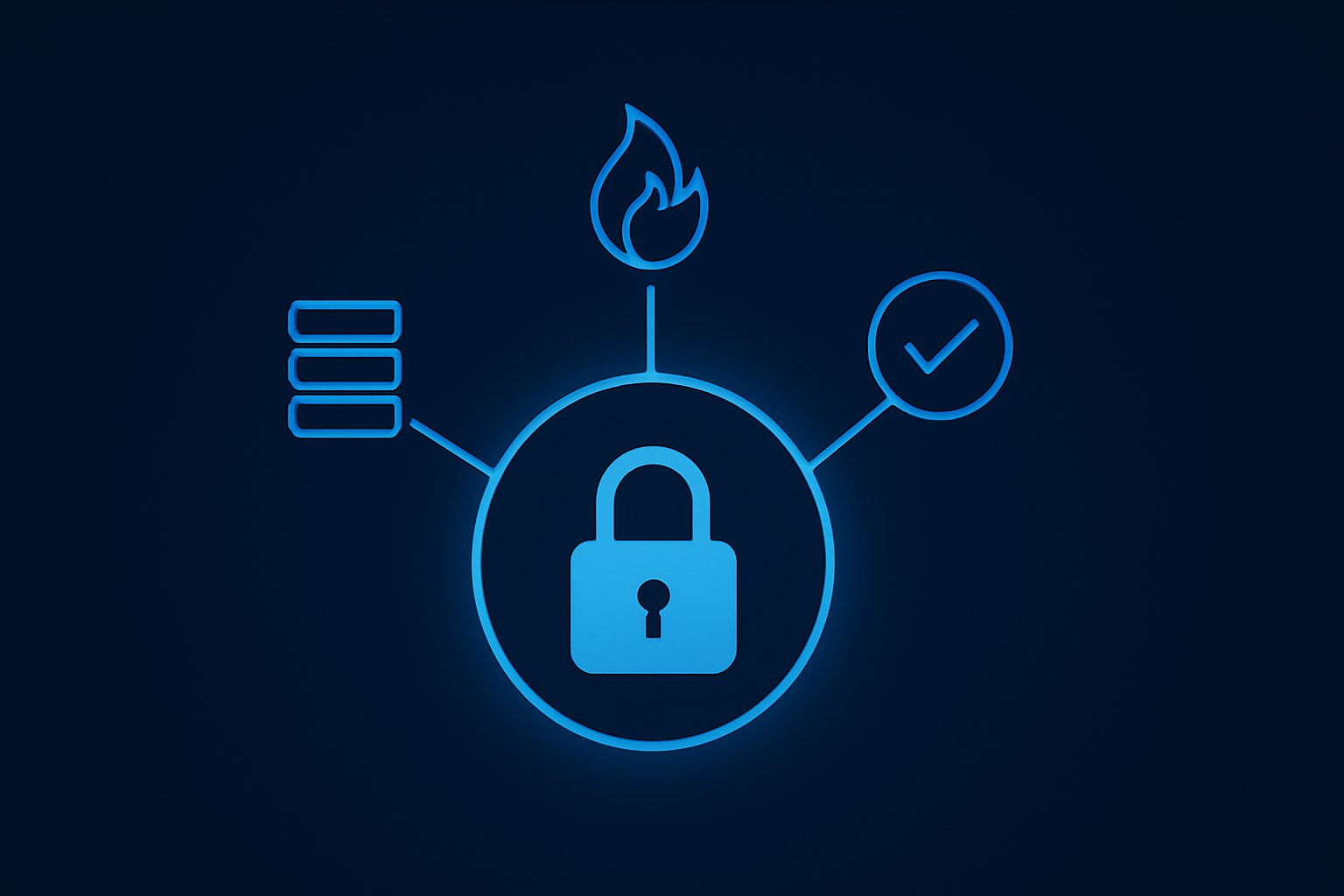
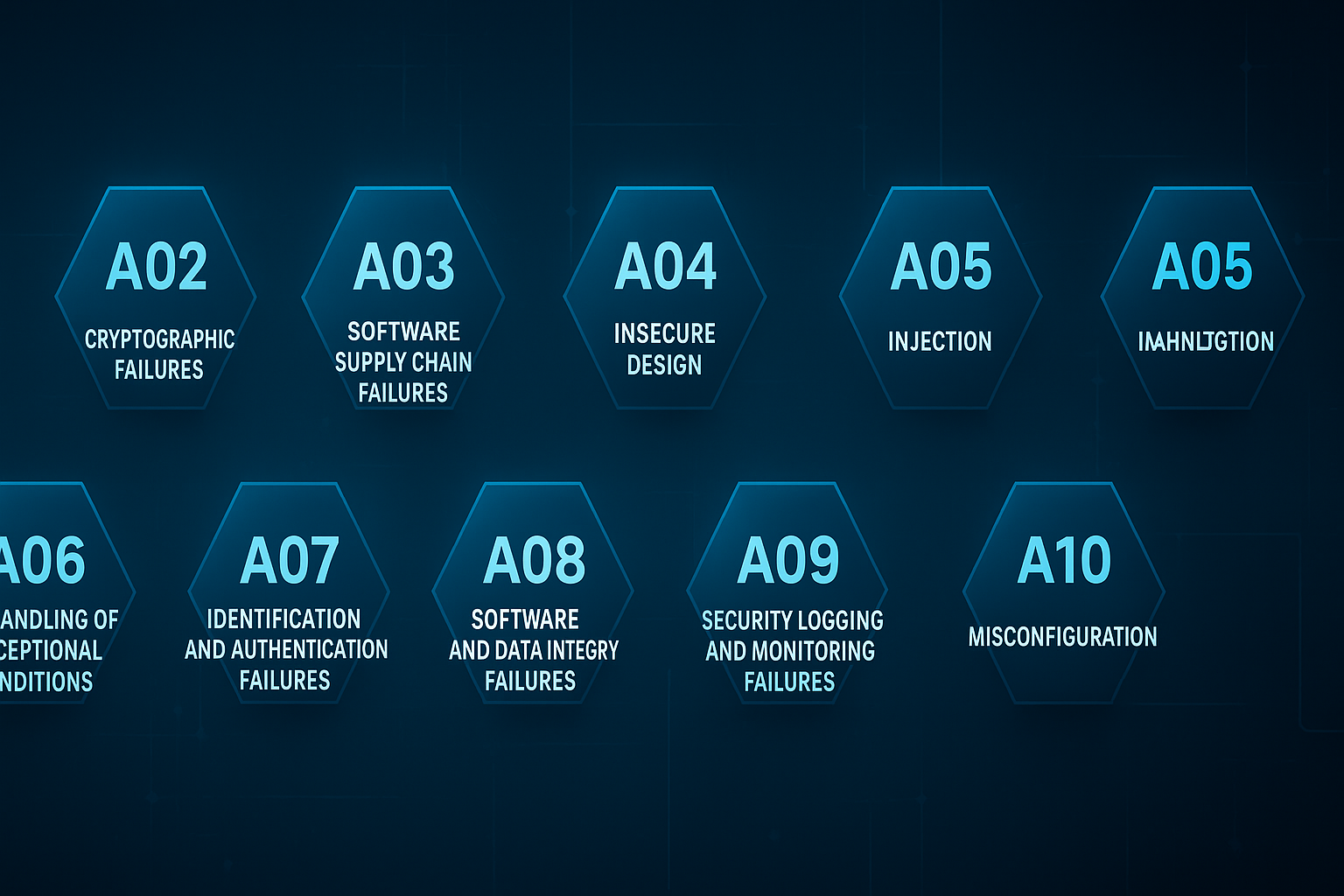
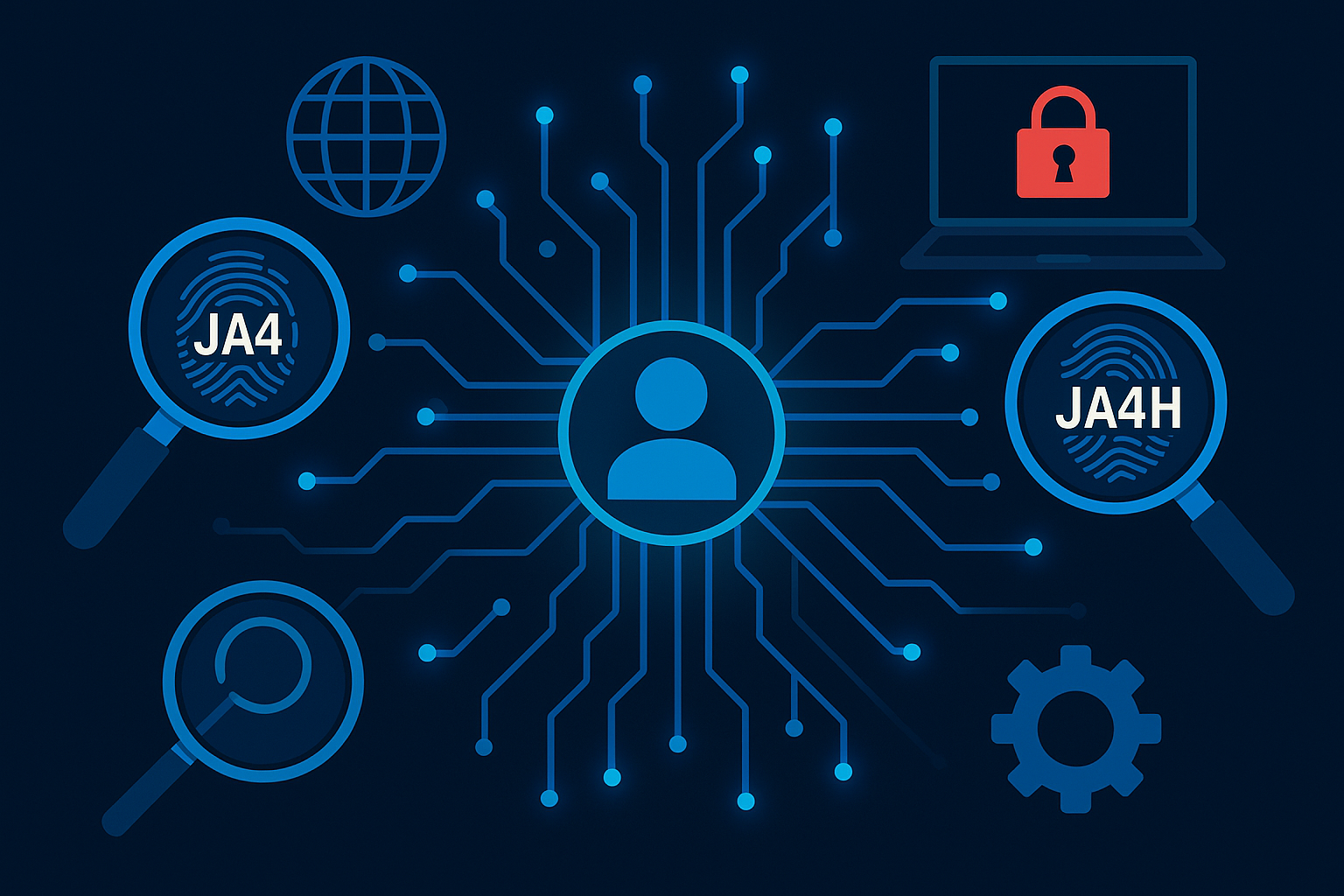

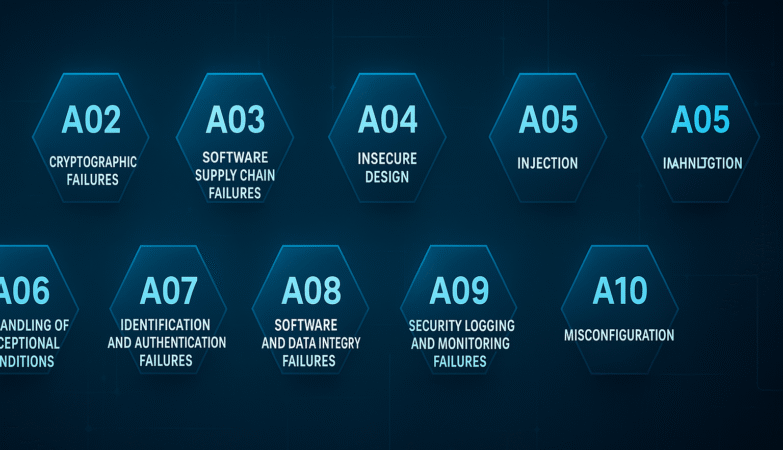
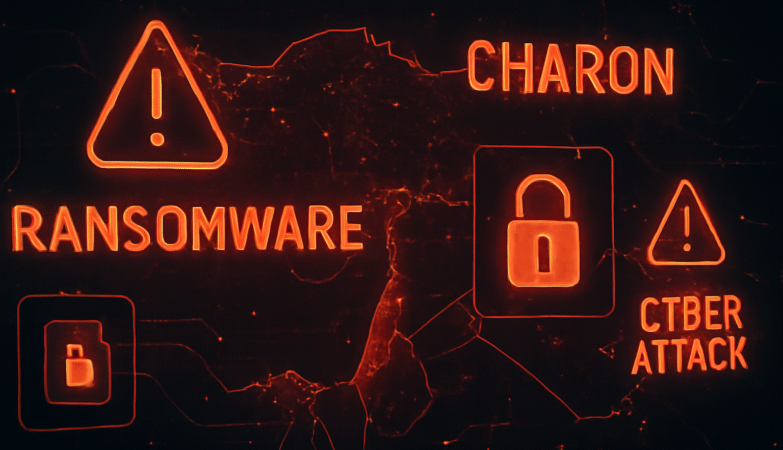


Scratch games like Sprunki Incredibox bring a fresh twist to music mixing fun. The new beats and visuals make creativity feel limitless. Check it out at Sprunki Incredibox!
That’s a fascinating take on longshot potential! Seeing platforms like jililive slot download prioritize efficient gameplay could shift betting patterns-faster access, faster bets, right? Interesting times for racing fans!
Baccarat’s patterns are fascinating – truly a game of observation! Seeing platforms like ph799 prioritize skill development is great; a solid foundation helps. Check out the ph799 app download apk for a structured learning experience – could be a game changer!
Solid article! Thinking about bankroll management is crucial, especially in tournaments. Seeing platforms like the vipph club emphasize a VIP experience suggests they understand player value too – good sign! 👍
Scratch cards always feel like a little bit of fun, don’t they? Seeing platforms like ArionPlay Club pop up in the Philippines with easy access via arionplay.click is cool – especially with options like GCash! Is arionplay legit for quick withdrawals? Seems promising!
That’s a solid point about adapting strategies! Seeing platforms like ph978 casino club cater specifically to the Philippine market with easy logins & apps is smart. It’s all about accessibility & trust these days, right? 🤔
Really interesting read! Seeing platforms like jiliki cater specifically to the Filipino market with GCash & PayMaya is smart. Considering a jiliki app download apk for easy access too! Great analysis.
Interesting points about responsible gaming frameworks! Seeing platforms like is arionplay legit prioritize KYC & secure deposits (like GCash!) is a good sign for Philippine players. Transparency is key!
That’s a solid point about accessibility in shooting games! Seeing platforms like boss77 link prioritize easy deposits (even with GCash!) is cool – makes getting into the fun faster, right? Good design matters everywhere!
Interesting points about responsible gaming & data transparency! Platforms like spintime download apk are pushing for more statistical insights, which is a smart move for players seeking informed choices. It’s good to see innovation!
This is one of the clearest explanations I’ve seen. Thanks!